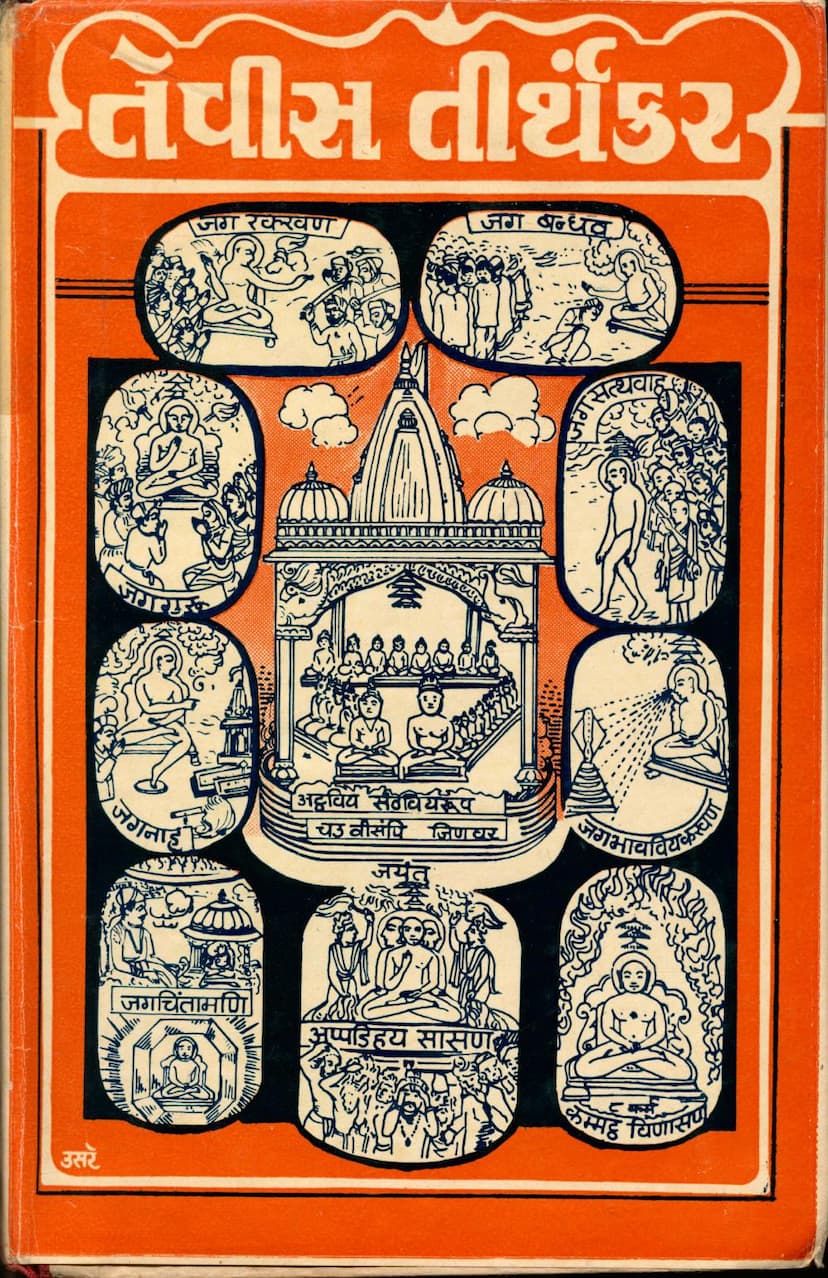Trevis Tirthankar
Added to library: September 2, 2025

Summary
Certainly! Here's a comprehensive summary of the Jain text "Trevis Tirthankar" by Chimanbhai B. Sheth, based on the provided content:
Book Title: Trevis Tirthankar (Twenty-Four Tirthankaras) Author: Professor Chimanbhai Bhailalbhai Sheth, M.A., B.A., LL.B., formerly Head of the History Department, L.D. Arts College, Ahmedabad. Author of "Jainism in Gujarat" and "Mahavir Charitra." Publisher: Published with the cooperation of Professor Chimanbhai Bhailalbhai Sheth and Shri Krutikarbhai Chunilalbhai Shah. Professor Sheth did not receive any remuneration for the book and contributed to half of the publication work unpaid. Shri Krutikarbhai Chunilalbhai Shah handled the financial responsibility of the publication.
Core Content of the Book:
The book "Trevis Tirthankar" meticulously details the lives and teachings of the twenty-four Tirthankaras of Jainism, from Lord Rishabhdev (Adinath) to Lord Parshvanath. It also includes the chronicles of significant figures associated with their eras, such as Chakravartis (Universal Monarchs), Vasudevas, Baladevas, and Prativaseudevas.
Key Themes and Highlights:
-
Tirthankara Biographies: The central focus is on the lives of the Tirthankaras, tracing their journeys from their celestial origins (Chyavana), birth, childhood, renunciation, attainment of omniscience (Kevalgyan), and final liberation (Nirvana). The book emphasizes their spiritual evolution through numerous past lives, highlighting the karmic journey that leads to Tirthankara-hood.
-
Past Lives and Karmic Journey: A significant aspect of the book is the detailed narration of the Tirthankaras' previous births. These accounts illustrate the principles of karma, illustrating how actions in past lives contribute to the spiritual development and eventual attainment of liberation. For example, the past lives of Lord Rishabhdev are extensively described, showing his progression through various stages of spiritual practice.
-
Establishment of the Four-Fold Community (Chaturvidh Sangha): The book details how the Tirthankaras, particularly Lord Rishabhdev, established the Jain religious order comprising monks (Sadhu), nuns (Sadhvi), laymen (Shravak), and laywomen (Shravika). This community was crucial for the propagation and preservation of Jain teachings.
-
Social and Cultural Contributions: The text delves into the social and cultural impact of Jainism, especially during the historical period of Jainism in Gujarat, as highlighted in the reviews. It showcases how Jain principles influenced societal norms, governance, and the patronage of arts and sciences by Jain rulers and ministers like Vastu-pal and Tejpal.
-
Moral and Spiritual Teachings: The narratives of the Tirthankaras serve as exemplars of virtuous living, non-violence (Ahimsa), truthfulness (Satya), non-possession (Aparigraha), and celibacy (Brahmacharya). Their lives are presented as a guide for spiritual aspirants to overcome worldly attachments, conquer inner enemies (Kashayas), and ultimately achieve liberation (Moksha).
-
Interactions with Prominent Figures: The book chronicles the interactions of the Tirthankaras with contemporary influential figures, including Chakravartis, Vasudevas, Prativaseudevas, and even divine beings like Indra and other celestial entities who participated in their significant life events (Kalyanakas) like birth and Nirvana celebrations.
-
Historical Context and Evidence: The author, Professor Chimanbhai Sheth, is noted for his thorough research, drawing from Sanskrit, Prakrit, Old Gujarati, and Persian literature. The reviews praise the book's reliance on documentary evidence, providing a historical and scholarly perspective on Jainism in Gujarat.
-
Inclusion of Mythological Narratives: The text also incorporates elements of Jain mythology, such as the lives of figures like Lord Rama (as a Baladeva), Lakshmana (as Vasudeva), Ravana (as Prativaseudeva), and the intricate stories of the Puranic characters within the Jain framework. These narratives, while mythological, are used to illustrate Jain principles.
-
Emphasis on Equanimity: The lives of the Tirthankaras consistently demonstrate detachment from worldly pleasures and pains. They maintained equanimity in all circumstances, understanding the transient nature of life and focusing on spiritual upliftment.
-
Inspirational Role Models: The Tirthankaras are presented as ideal role models who, through their profound spiritual practices and unwavering adherence to Jain principles, achieved the highest state of existence. Their lives inspire readers to strive for self-purification and liberation.
Author's Approach and Vision:
Professor Chimanbhai Sheth aimed to present the lives of the Tirthankaras in a simple and accessible language, making the complex spiritual journeys understandable to the common reader. The book is a testament to his dedication to Jainology and his effort to make this knowledge widely available. The collaboration with Shri Krutikarbhai Chunilalbhai Shah underscores a shared commitment to promoting Jain literature.
In essence, "Trevis Tirthankar" is a profound and comprehensive work that serves as an invaluable resource for understanding the lives, teachings, and philosophical underpinnings of the twenty-four Tirthankaras within the Jain tradition. It is a blend of historical scholarship, spiritual narrative, and moral instruction.